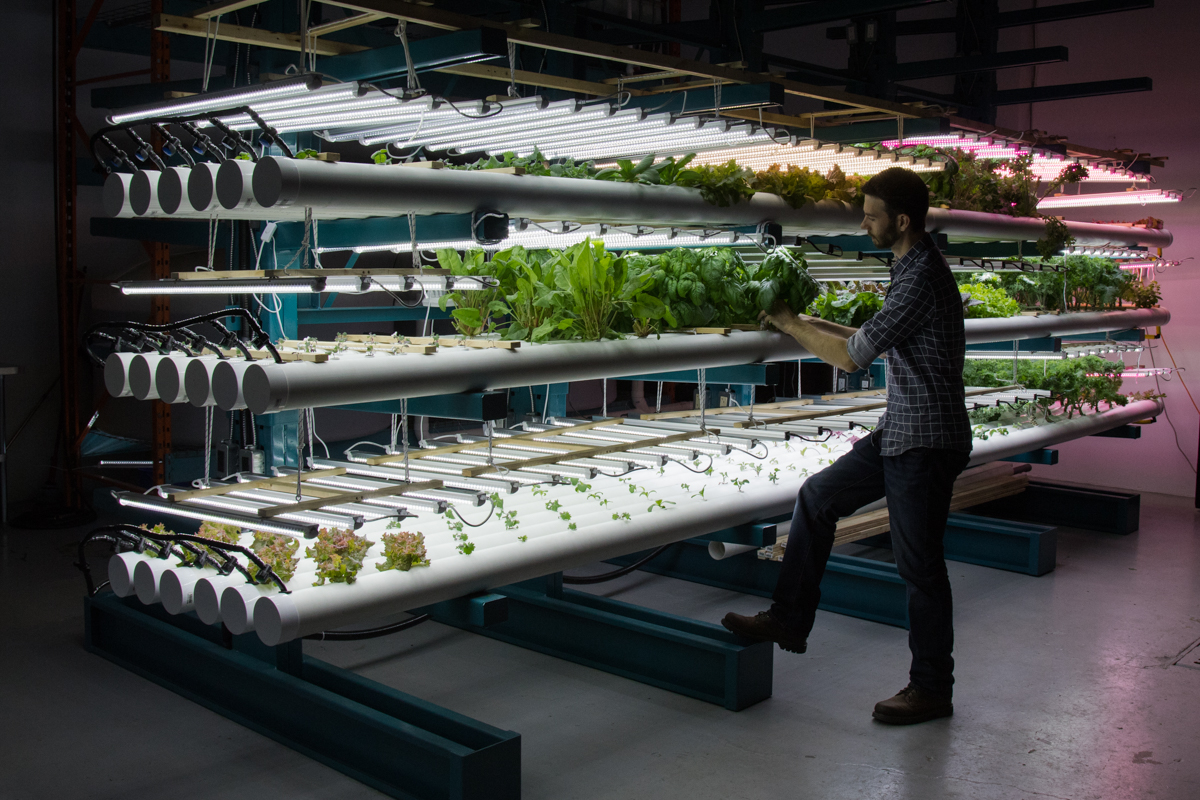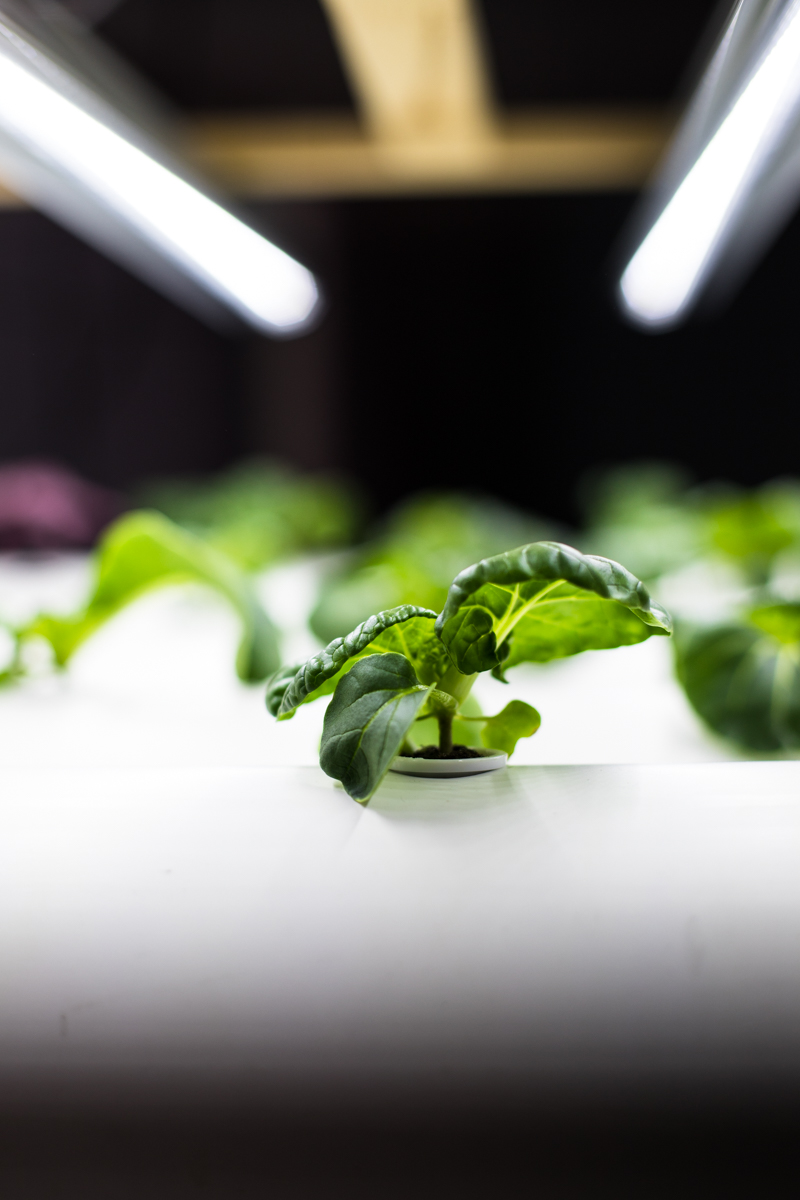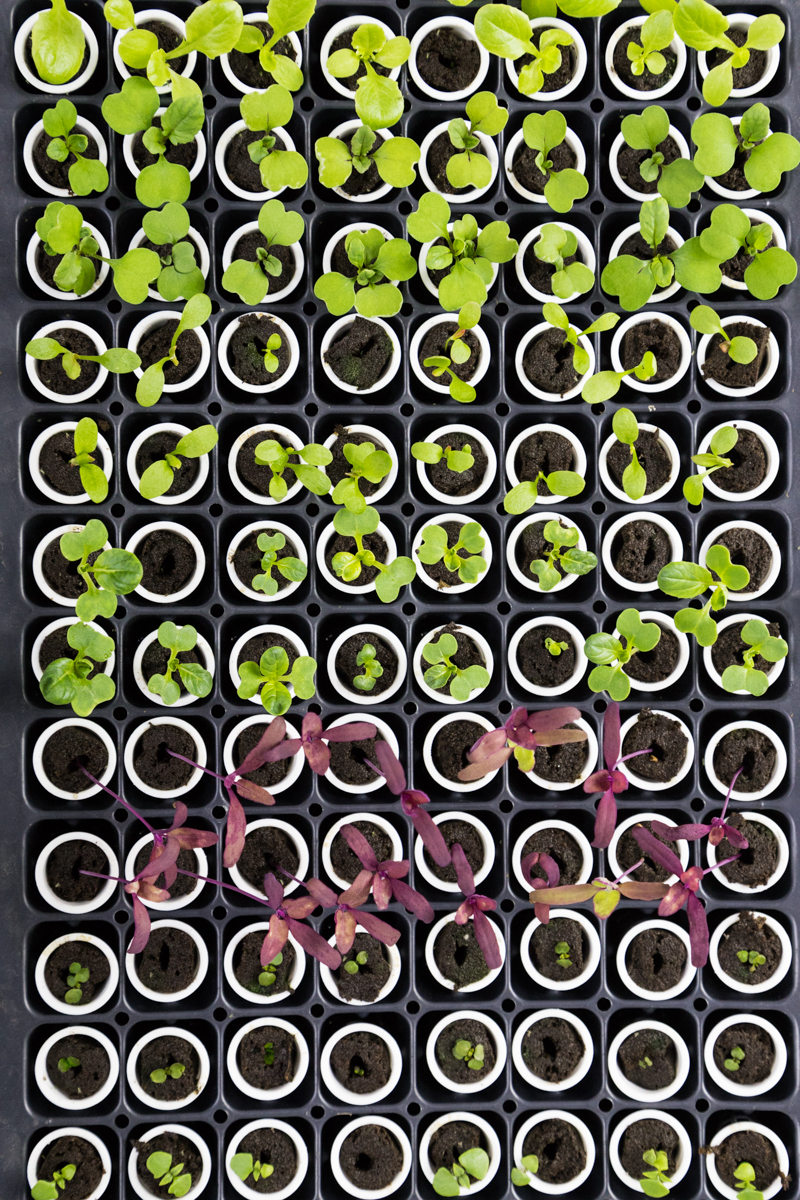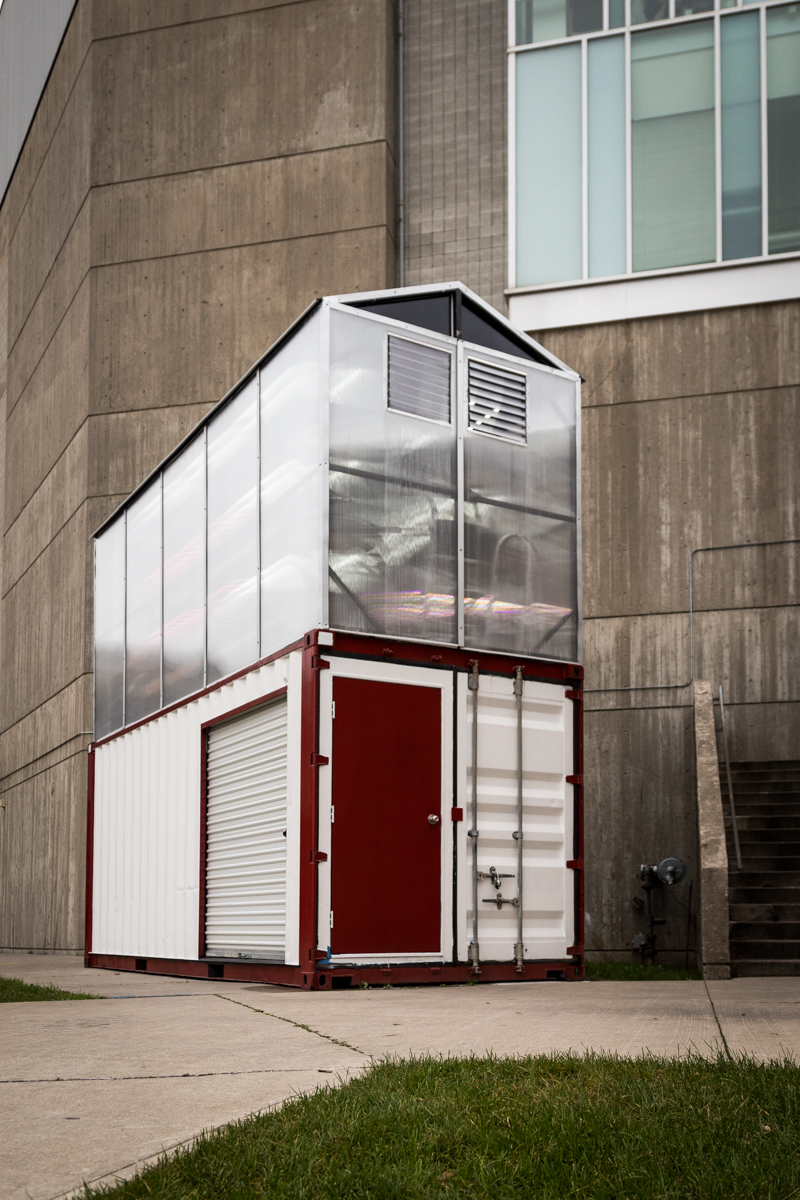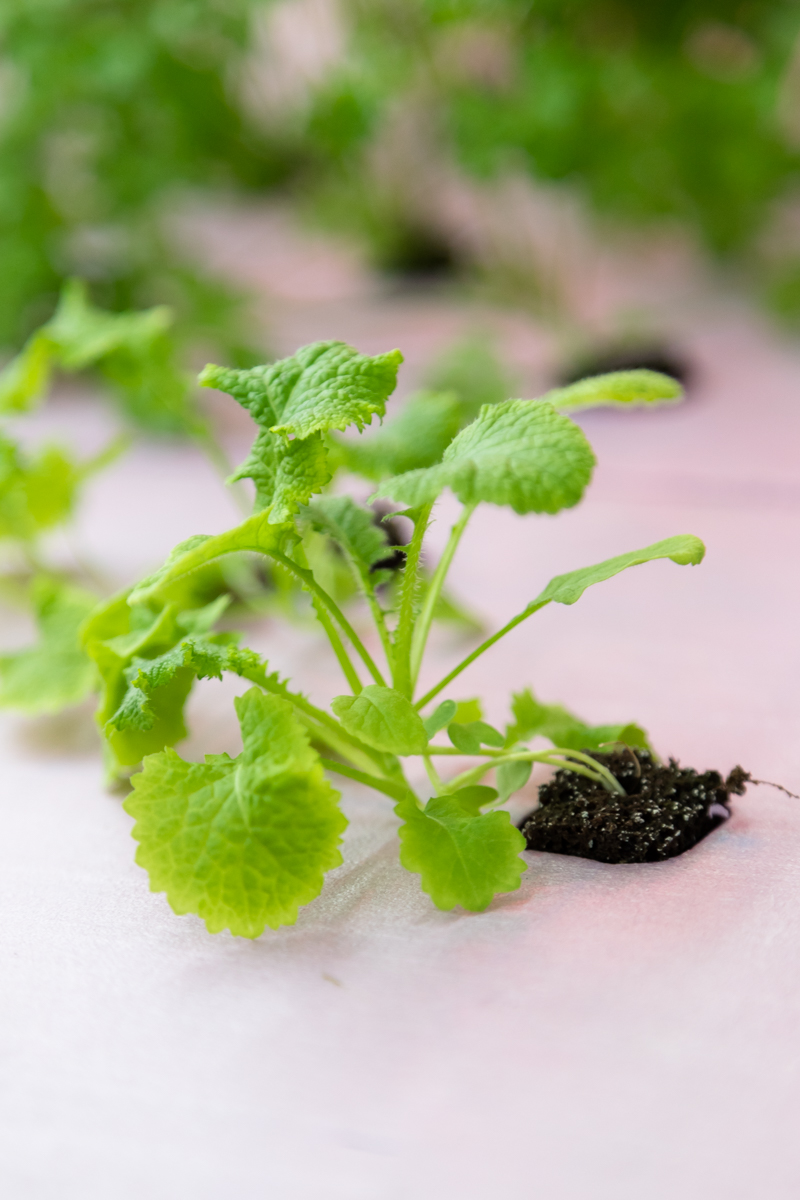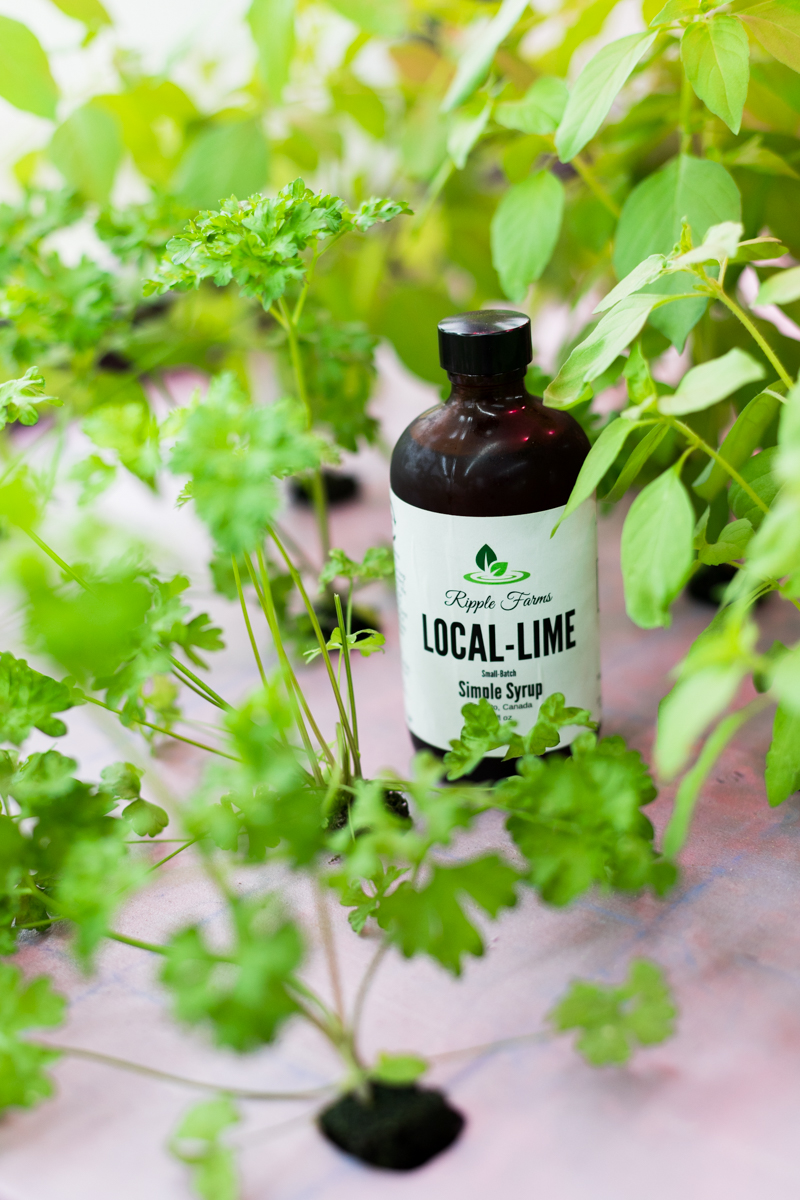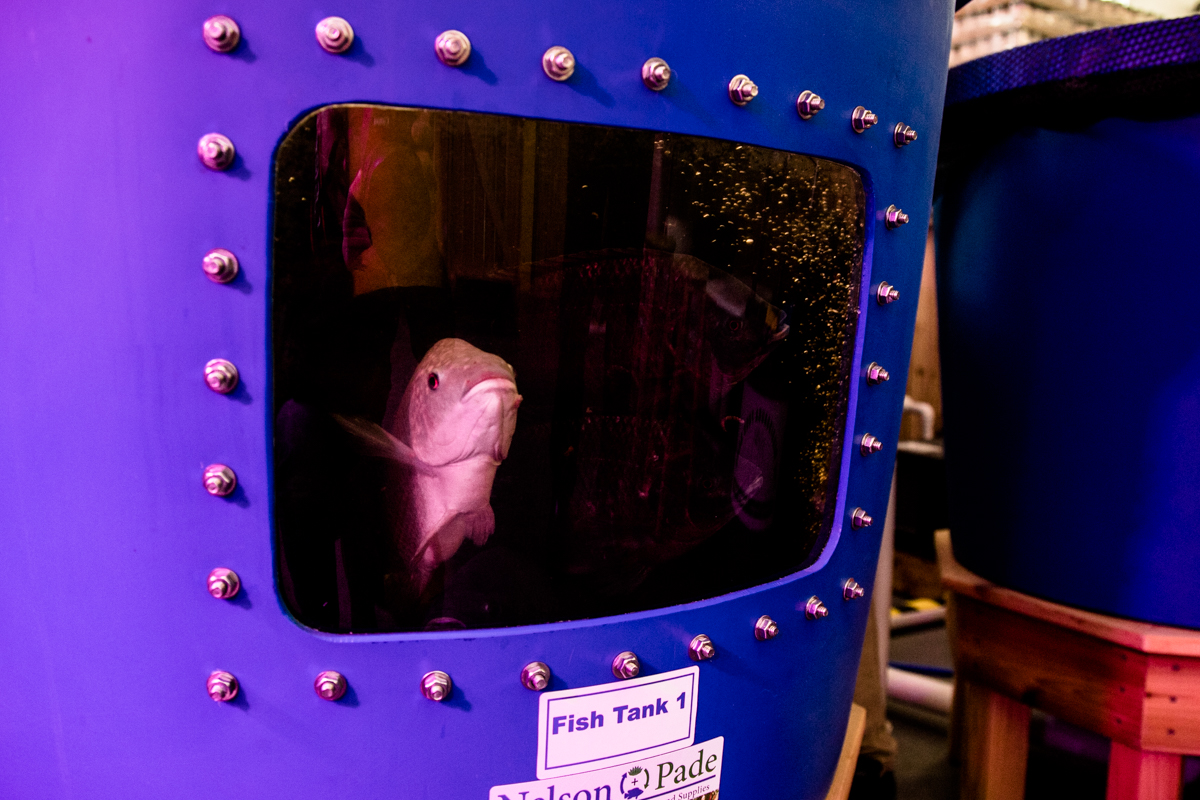Edible Toronto
A City That Feeds Itself
Photo by Andrew Budziak
Waterwheel Farms grows arugula, merlot, bakito and oakleaf lettuce, bok choy, sorrel and what , shown above, calls his most popular product — tender kale.
Alec Wheeler of Waterwheel Farms.
The smell of basil (among other herbs and greens) is pleasantly overwhelming when you enter Waterwheel Farms.
Housed inside a shipping container, Steven Bourne and Brandon Hebor, of Ripple Farms, say they’ve created Canada’s first urban-farming unit.
The units, one at Seneca College (shown here) and one at the Evergreen Brickworks, pump water upstairs to the greenhouse.
Fresh greens growing at Ripple Farms.
Instead of discarding “ugly” or yellowed lime basil leaves, Ripple Farms partnered with Alveole Honey and chef Charlotte Langley to make Local Lime — a sweet lime basil syrup that can be used in a multitude of ways.
In little more than a year, the Mississauga Food Bank’s aquaponic farm — AquaGrow — has been able to distribute more than 11,000 servings of greens and 600 portions of fish. Each fish provides two hearty fillets.
Tilapia is commonly used in aquaponic farming systems because it is a hardy fish that deals well with stress and doesn’t mind being in tight quarters. In aquaponic farming, fish can provide a second revenue stream for farmers.
Tending to a new crop crop of greens.

